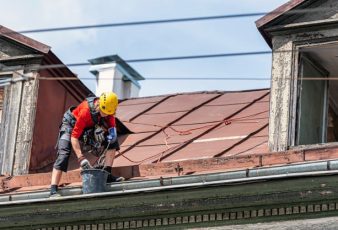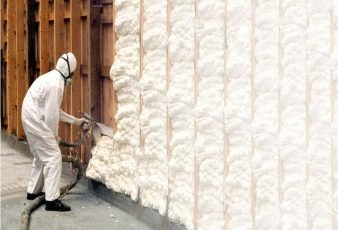Dealing with pests can be a frustrating and challenging task for homeowners and businesses alike. Whether it’s ants invading the kitchen, rodents scurrying in the attic, or termites damaging the foundation, pests can cause significant problems if left unchecked.
The key to effective pest control is a proactive and comprehensive approach that addresses prevention, identification, and eradication. This ultimate guide will explore essential tips and strategies to help you tackle pest problems and create a pest-free environment.
Introduction To Pest Control
As the name implies, pest control is eliminating or managing pests from your property. Ants, spiders, cockroaches, rats, and mice are all the categories of pests you might find at home. The method of pest control includes several methods, such as preventive measures, identification, and hiring professional pest services.
Your house is a place of relaxation, not something to intrude into. Pest infestation is a common problem where the pests inhabit a certain portion of your house. And they don’t give you just an ick; sometimes, they also result in bigger health conditions.
Effective Strategies For Pest Control
Pests can sometimes be a troublesome situation, and they are not limited to just households. Nowadays, pests are found in workplaces, shops, and even in classrooms when not treated properly. While cleaning is the first step to removing pest habitats, there are other pest control strategies as well:
1. Pest Prevention: The First Line of Defense
Prevention is the foundation of effective pest control. By taking preventive measures, you can significantly reduce the likelihood of pests infesting your property.
Here are some key prevention strategies:
- Sealing Entry Points: Inspect your property for gaps, cracks, and holes pests can use to enter. Seal these entry points to prevent pests from infiltrating your home or building.
- Proper Food Storage: Keep food in sealed containers and clean up spills promptly to avoid attracting pests like ants and cockroaches.
- Maintain Cleanliness: Regularly clean your living or working spaces to eliminate potential food sources for pests and remove clutter that can serve as hiding spots.
- Trim Vegetation: Trim bushes, trees, and shrubs away from your property to reduce potential pathways for pests, such as rodents, to enter.
2. Early Detection: Identifying Pest Problems

Early detection is crucial in pest control. Catching a pest infestation in its early stages allows you to take prompt action before the problem worsens.
Keep an eye out for the following signs of pest activity:
- Droppings and Tracks: Pest droppings and tracks are telltale signs of their presence. Familiarize yourself with the appearance of droppings from common pests like rodents and insects.
- Unusual Sounds: Listen for any unusual sounds, such as scratching or squeaking, that could indicate the presence of rodents or other pests.
- Visible Damage: Look for signs of damage to your property, such as gnawed wires, chewed furniture, or wall holes, which can point to a pest infestation.
- Nesting Materials: Pests often build nests using paper, fabric, and twigs. Detecting these nests can help identify the pest species and their location.
3. Pest Identification: Know Your Adversaries
Proper pest identification is essential for implementing effective control methods. Different pests require specific approaches for eradication. Take the time to identify the pests infesting your property to tailor your pest control efforts accordingly.
- Insects: Familiarize yourself with the appearance of common household insects like ants, cockroaches, spiders, and bedbugs. Each requires a different treatment method.
- Rodents: Rats and mice are common rodent pests. Identifying their species can aid in selecting the appropriate traps or bait for eradication.
- Termites: Termites can cause extensive damage to buildings. If you suspect termite activity, consult a professional for a thorough inspection.
4. Integrated Pest Management (IPM): A Holistic Approach
Integrated Pest Management (IPM) is a comprehensive and sustainable approach to pest control that combines multiple strategies for long-term success. It focuses on reducing pest populations while minimizing environmental harm and non-target organisms.
The key components include:
- Inspection and Monitoring: Regularly inspect your property for pest activity and monitor the effectiveness of control measures.
- Prevention: As mentioned earlier, prevention is a fundamental aspect of IPM. Addressing potential pest problems before they occur is vital.
- Cultural Control: This involves altering the environment to make it less favorable for pests. For example, choosing pest-resistant plants in landscaping can deter certain insects.
- Biological Control: Introduce natural predators, parasites, or pathogens that target specific pests. This can help keep pest populations in check.
- Chemical Control: If necessary, use pesticides as a last resort and apply them in targeted areas to minimize their impact on non-target organisms.
5. Professional Pest Control Services

Though DIY pest control techniques might work for small infestations, there are instances where pest control specialists are essential. If faced with an intense or recurring pest issue, it’s advisable to consult expert pest control services.
They have the knowledge, experience, and access to more potent products to tackle challenging infestations safely and effectively.
6. Maintaining Hygiene All By Yourself
When it comes to stopping pests from intruding on your personal space, maintaining hygiene deserves mention. No matter how much we talk about it, it is less. Because we sometimes fail to take necessary hygiene measures.
- Look for an infestation: If you are witnessing a winged invader along with its troop at your house, there might be some bad news waiting for you.
- Place Organic Traps: Even after taking preventive steps for pest control, sometimes you need organic traps. Make sure rodents and pests stay away from your house.
- Install Window Fly Screens: Summers are pretty tough when swarms of flies and mosquitoes come inside. Make sure to install window fly screens all across your house.
Wrap Up
In conclusion, effective pest control demands a proactive, holistic, and informed approach. By prioritizing prevention, early detection, proper pest identification, and adopting integrated pest management principles, you can significantly reduce the likelihood of infestations and protect your property from pest-related damages.
If faced with a particularly stubborn or extensive infestation, don’t hesitate to seek the help of professional pest control services to ensure a pest-free environment for your home or business.
Read Also:




























